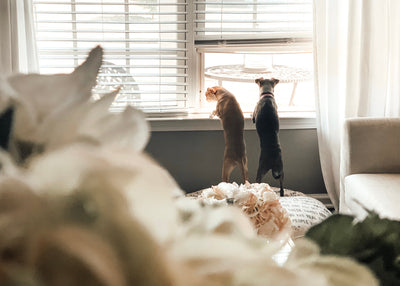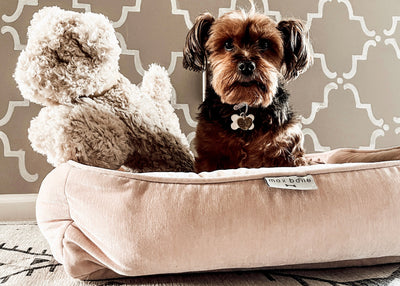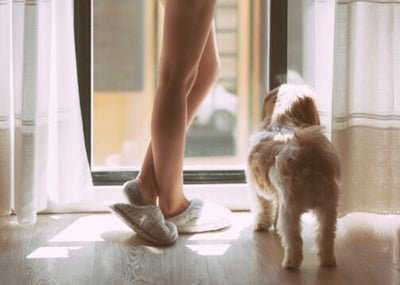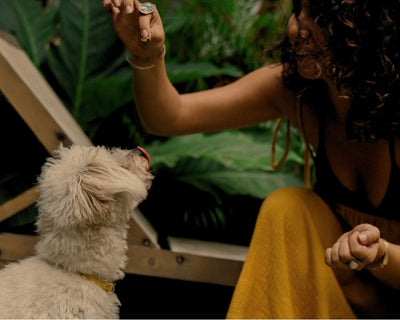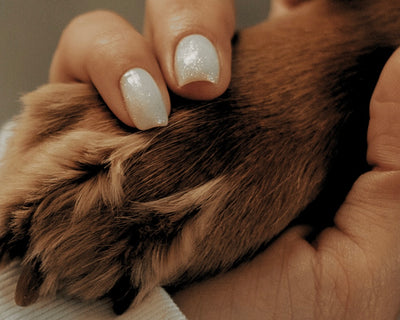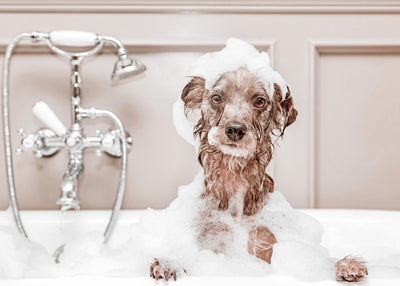Noise Training for Dogs: How to Calm Barking, Fear & Fireworks Freak-Outs

This blog post contains affiliate links. This means I may earn a small commission at no additional cost to you should you choose to make a purchase using my link. I love all of these companies and you will too!
So you brought home a new dog and he won't stop barking - at everything. Every. Single. Thing. Car engines. Neighbors walking by. Doorbells. Postal workers. Baby cries. The dishwasher.
Or worst yet, your normally well-manner canine companion needs to pop two Xanax’s and a pup cocktail to survive the 4th of July fireworks display. Now what?
Instead of pulling all of your hair out why not try noise training?
What Is Noise Training?
Noise Training is the process of slowly desensitizing your dog to unusual or common sounds; usually to stop excessive barking or fearful behaviors. Oftentimes noise-phobic dogs bark from a place of fear or stress. So how does it work?
How To Noise Train Your Dog
So here's the good news, pet parents - correcting unwanted behaviors can be very easy when we focus on increasing positive associations and shell out plenty of dog treats and snuggles.
The first step in reducing your pup's noise phobia is identifying which sounds trigger him the most. Is it unusual sounds coming from outside? Household appliances like vacuums? Or maybe your dog is triggered by more scary sounds like thunder? Did you just relocate to a new home or apartment? 
Thoughtfully look to identify the root cause of your dog's noise phobia. Once your have identified the key trigger now your training sessions can begin.
Start by slowly introducing your dog to the types of sounds that trigger him - but at a very low level. So if your dog is sensitive to the sound of the doorbell or maybe hallway noises if you live in an apartment building, calmly introduce him to those sounds during a 10 to 20 minute training session.
If you have a digital doorbell, reduce the volume of the ring. Then repeatedly ring the while soothing your dog and rewarding him for his silence in response to the bell.
If your dog is triggered by the sounds of strangers outside or cars driving by, try leaving your tv on at a low volume tuned into programming with similar sounds. If your dog is fearful of thunder, play storm sounds on your phone at a low volume while repeatedly reassuring him.

Another tip to noise training your dog is reducing their overall anxiety. So make sure your dog has a safe space to relax. General obedience training also helps with your noise training sessions. Working on basic obedience commands like Stay, Sit, Quiet and Down will help you keep your dog under control during stressful events.
The key to successful noise training is to repeatedly introduce your dog to different sounds at a low volume and then slowly overtime increase the volume. As a dog mom using these tips have helped me to raise three happy secure dogs who aren't triggered even during the loudest thunderstorms or neighborhood parties.
When To Hire A Expert Dog Trainer?
I'm not going to lie to you though. In some cases you may need to enlist the help of a professional dog trainer to get to root cause of your dog's behavior. This may especially be the case in dogs who suffer from severe anxiety or fear-based behaviors. A professional's years of experience and specific expertise may be required to best help your fur kid.

